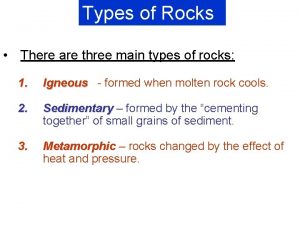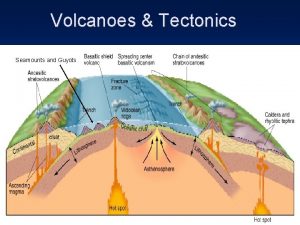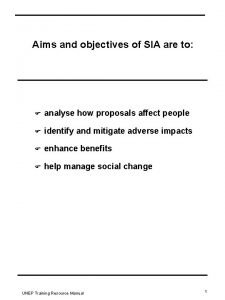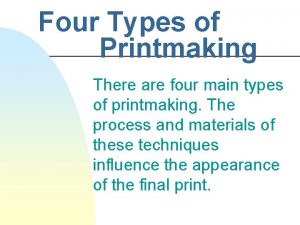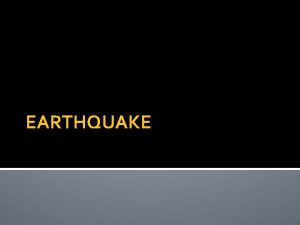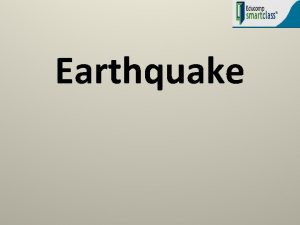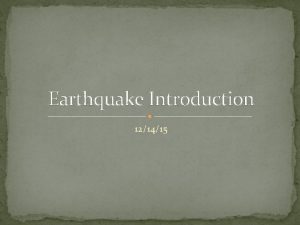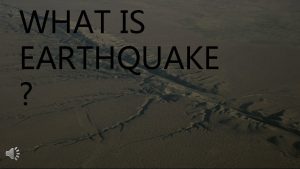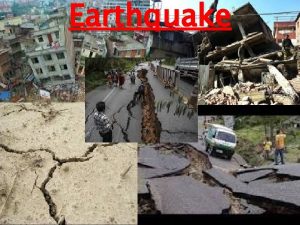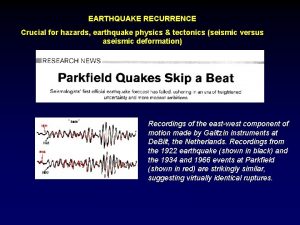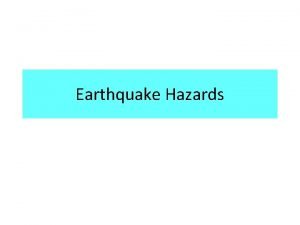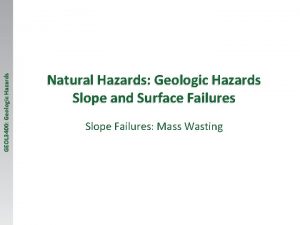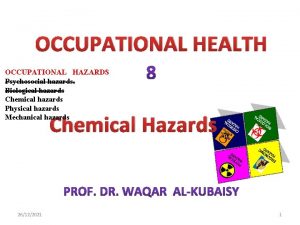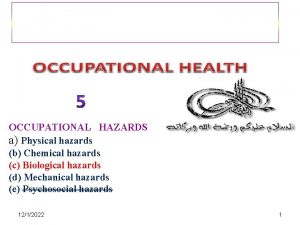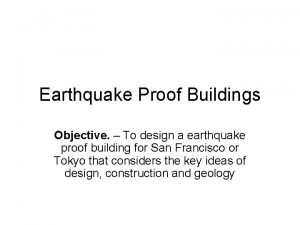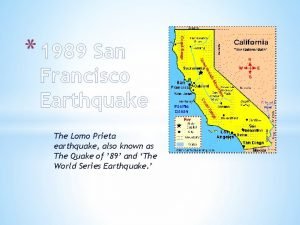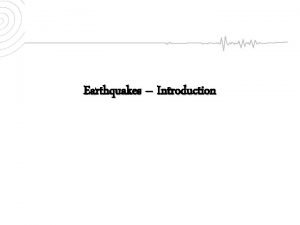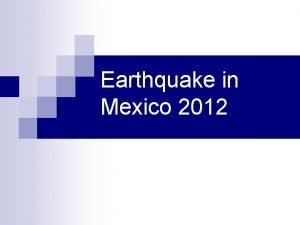How do we manage earthquake hazards Three main



















- Slides: 19

How do we manage earthquake hazards? Three main choices: • Do nothing – accept hazard • Adjust to living in hazardous place , get insurance, strengthen your home and prepare • Leave the area

Check for Hazards in the Home

Disaster kit……

What other preparations does the video mention?

Earthquake proof buildings Use of foundations with rubber layers allows buildings to easily move by up to several inches and absorb sideways movement. These are called base isolators. Cross bracing. This allows buildings to twist on their foundations and not collapse.


Base isolators When a building is built away (isolated) from the ground It will only move a little or not at all during an earthquake instead of moving with the ground


Use a roof counterweight on the building. When the building moves one way, the counterweight moves the other way and keeps it upright!!

Taipei Tower: The 508 m (1, 667 -foot) Taipei 101 Tower would sway back and forth up to 60 cm (2 feet) each way within five seconds. The Taipei 101 engineers included a 662 tonne (730 -ton) counter giant pendulum to act as a counter weight.

Buildings designed and constructed in regular patterns – square, rectangular, cuboid or even triangular – have the ability reduce seismic forces spreading the shaking equally through the whole building. Irregular-shaped buildings distribute earthquake forces in such a completely random and uneven fashion that building collapse is virtually inevitable.

Ensure all part of a building a firmly attached to each other eg. The house to the foundation and the roof to the building

Will building reinforcements work for all countries? To a certain extent: yes! Simple design for LICs


Adjustment to hazard: Earthquake proof buildings http: //www. youtube. com/watch? feature=player_embedded&v=l. I 1 M 8 o 0 BHPc • In a high rise building shock waves increase as they move ________ • Buildings that are close together _____ vibrations • ____ parts of a building are when different parts meet • ______ soil or weak rock cause problems with foundations • _______ strengthens a building and ________ separate it from the shaking ground Amplify Base isolators Weakest Upwards Soft Cross bracing

Task • Design a earthquake proof building • Your building should take into consideration design, construction and geology • Pick between 6 -8 characteristics • Draw your building at the centre of your page. • Label your building to describe the characteristics you’ve chosen and explain why you’ve included them.

Pick between 5 -10 characteristics from the list below Triangular shape Square shape Circular shape X bracing Short building Tall building Base isolators K bracing Counterweights Shock absorbers Fixed base No bracing Steel Concrete Stone Wood Glass Bricks Plastic Tiles Sand Soft mud Hard bedrock Reclaimed land Steep Slope Flat land Near a fault line Away from a fault

Peer Assessment - One positive comment – what did they do really well? - One improvement – what could they do better? Write your comments neatly!

Aim: To understand adjustment to an earthquake Triangular shape Square shape Circular shape X bracing Short building Tall building Base isolators K bracing Counter-weights Shock absorbers Fixed base No bracing Steel Concrete Paper Wood Glass Bricks Plastic Tiles Sand Soft mud Hard bedrock Reclaimed land Steep Slope Flat land Near a fault line Away from a fault Design a earthquake proof building Your building should take into consideration design, construction and geology Pick between 5 -10 characteristics Draw your building at the centre of your page. Label your building to describe the characteristics you’ve chosen and explain why you’ve included them.
 Pests can cause which two types of contamination
Pests can cause which two types of contamination What are three types of hazards that make food unsafe
What are three types of hazards that make food unsafe Ways of expressing future time
Ways of expressing future time Finding the main idea why were canals built?
Finding the main idea why were canals built? Void main int main
Void main int main 3 main types of
3 main types of Middle level clouds
Middle level clouds School of thoughts in education
School of thoughts in education The three main parts of a tree
The three main parts of a tree Partes del ejote
Partes del ejote Identifying cloud types
Identifying cloud types What are the three main parts of an easy
What are the three main parts of an easy Three main aims of the sia
Three main aims of the sia Three main ways volcanoes are created
Three main ways volcanoes are created There are three main types of
There are three main types of Cleavage furrow in cell division
Cleavage furrow in cell division What are the 3 main reasons authors write
What are the 3 main reasons authors write Three main aims of the sia
Three main aims of the sia Insect 3 body parts
Insect 3 body parts What are the 4 types of printmaking techniques?
What are the 4 types of printmaking techniques?





